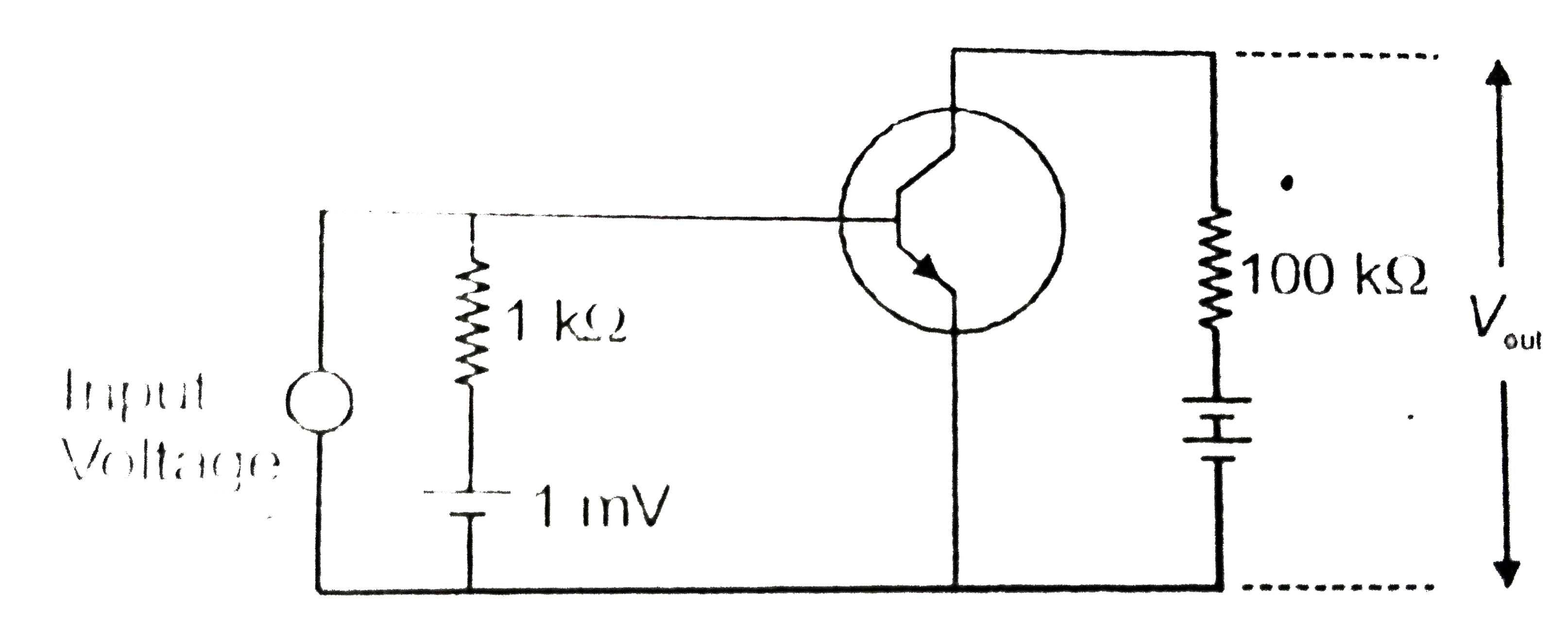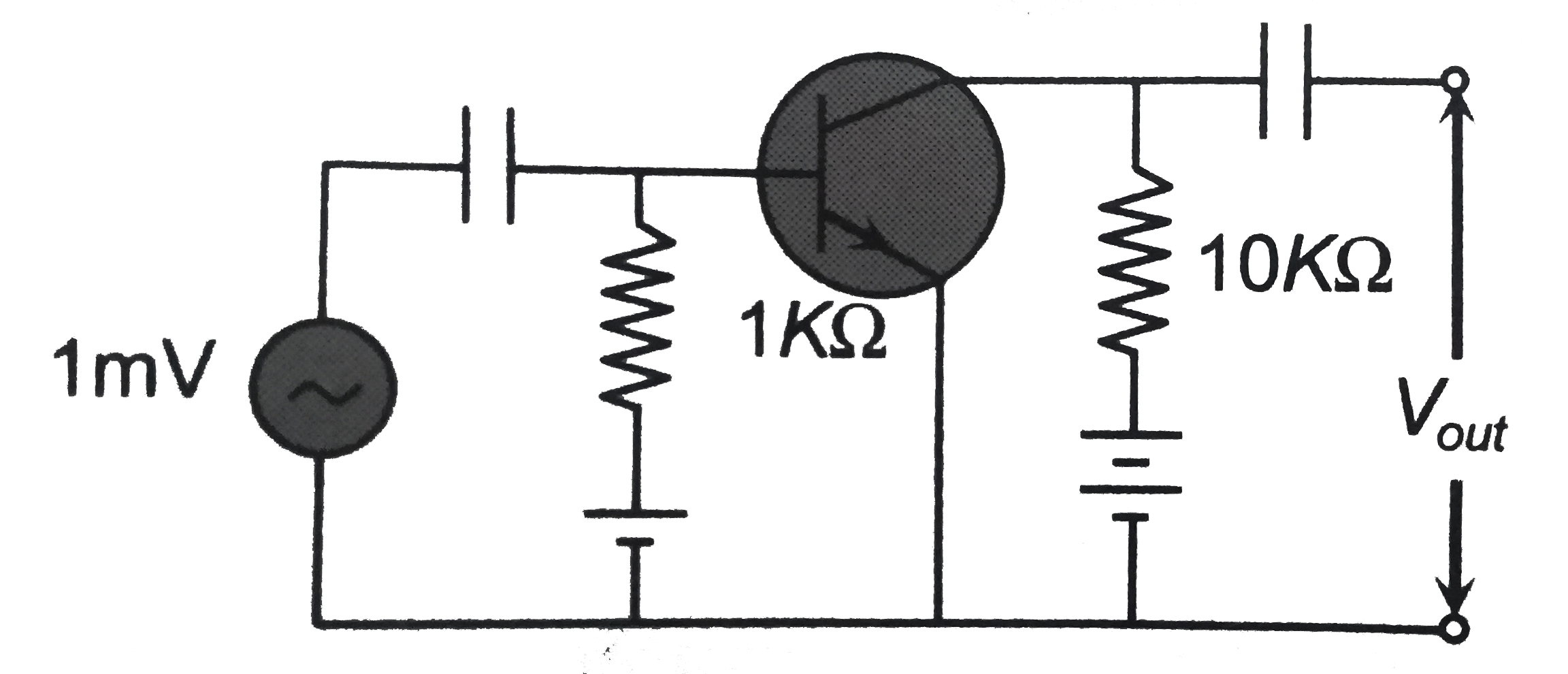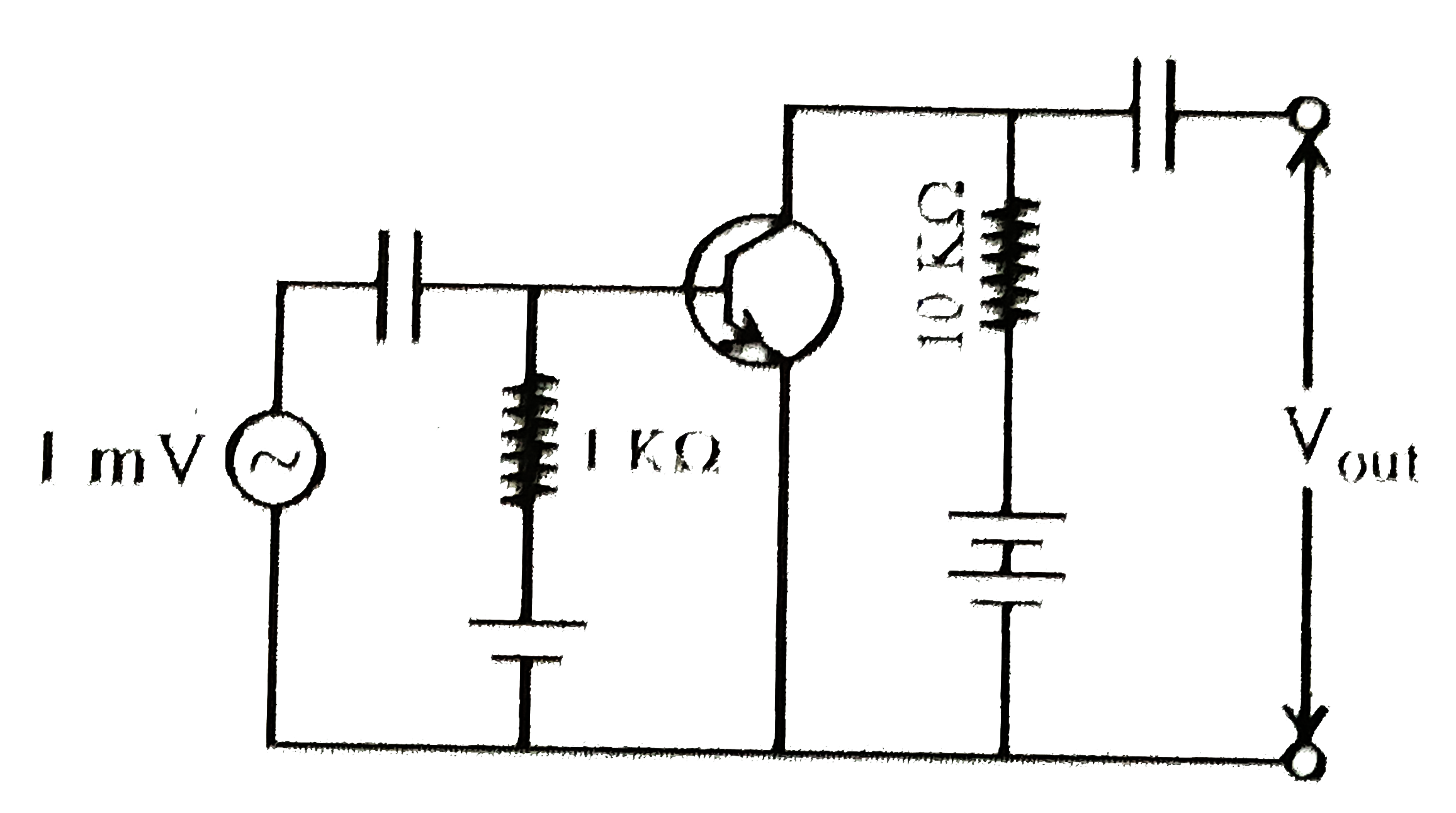17. In a bipolar junction transistor (BJT), the current gain β is defined as
The ratio of the change in collector current to the change in emitter current for a constant collector voltage in the common base configuration
The ratio of the vhange in emitter current to the change in base current for constant emitter voltage in the common emitter configuration
The ratio of the change in collector current to the change in base current for constant collector voltage in CE configuration
The ratio of the change in base current to the change in collector current for constant collector voltage in CE configuration
The correct Answer is:C
Step-by-Step Solution:
1. Understanding the BJT Configuration:
A bipolar junction transistor (BJT) has three regions: the emitter, the base, and the collector. It can be configured in different ways, primarily as a common emitter or common base.
Hint: Recall the structure of a BJT and the roles of the emitter, base, and collector.
2. Defining Current Gain (β):
The current gain, denoted as β (beta), is a key parameter of a BJT. It is defined as the ratio of the change in collector current (ΔIC) to the change in base current (ΔIB) under specific conditions.
Hint: Remember that β is a measure of how effectively a BJT can amplify current.
3. Conditions for Measurement:
For the definition of β, it is important that the collector-emitter voltage (VCE) remains constant. This ensures that the changes in currents are due to the input signal and not influenced by variations in voltage.
Hint: Think about why keeping VCE constant is crucial for accurate measurements in transistor operation.
4. Formulating the Expression:
The mathematical expression for current gain (β) in a common emitter configuration is given by:
β=ΔICΔIB(at constant VCE)
This means that for a small change in base current, there is a corresponding change in collector current.
Hint: Focus on the relationship between the changes in collector and base currents.
5. Identifying the Correct Answer:
From the definitions and conditions discussed, the correct answer to the question is:
- The ratio of change in collector current to change in base current for a constant collector voltage in common emitter configuration.
Hint: Look for the option that matches the derived expression for β.
Final Answer:
The current gain β in a bipolar junction transistor (BJT) is defined as the ratio of change in collector current to change in base current for a constant collector voltage in common emitter configuration.
A bipolar junction transistor (BJT) has three regions: the emitter, the base, and the collector. It can be configured in different ways, primarily as a common emitter or common base.
The current gain, denoted as β (beta), is a key parameter of a BJT. It is defined as the ratio of the change in collector current (ΔIC) to the change in base current (ΔIB) under specific conditions.
For the definition of β, it is important that the collector-emitter voltage (VCE) remains constant. This ensures that the changes in currents are due to the input signal and not influenced by variations in voltage.
The mathematical expression for current gain (β) in a common emitter configuration is given by:
β=ΔICΔIB(at constant VCE)
This means that for a small change in base current, there is a corresponding change in collector current.
From the definitions and conditions discussed, the correct answer to the question is:
- The ratio of change in collector current to change in base current for a constant collector voltage in common emitter configuration.
The current gain β in a bipolar junction transistor (BJT) is defined as the ratio of change in collector current to change in base current for a constant collector voltage in common emitter configuration.
Topper's Solved these Questions
- BOOK - ERRORLESSCHAPTER - ELECTRONICSEXERCISE - NCERT Based Questions (Digital Electronics)23videos
ELECTRONICS
- BOOK - ERRORLESSCHAPTER - ELECTRONICSEXERCISE - Past years questions73videos
ELECTRONICS
- BOOK - ERRORLESSCHAPTER - ELECTRONICSEXERCISE - NCERT Based Questions (Semiconductor Diode)49videos
ELECTRONICS
- BOOK - ERRORLESSCHAPTER - ELECTRON, PHOTON, PHOTOELECTRIC EFFECT & X -RAYEXERCISE - ASSERTION & REASON27videos
ELECTRON, PHOTON, PHOTOELECTRIC EFFECT & X -RAY
- BOOK - ERRORLESSCHAPTER - ELECTROSTATICSEXERCISE - ASSERTION & REASON25videos
ELECTROSTATICS
Similar Questions
Knowledge Check
- Question 1 - Select One
The current gain β may be defined as
Athe ratio of change in collector current to the change in emitter current for a constant collector voltage in a common base arrangement.Bthe ratio of change in collector current to the change in the base current at constant collector voltage in a common emitter circuitCthe ratio of change in emitter current to the change in base current for constant emitter voltage in common emitter circuit.Dthe ratio of change in base current to the change in collector current at constant collector voltage in common emitter circuit. - Question 2 - Select One
In a junction transistor, the current gain B is defined as
AThe ratio of the change in collector current to the change in emitter current for a constant collector voltage in the common base configuration.Bhe ratio of change in emitter current to the change in base current for constant emitter voltage in common emitter configuration.CThe ratio of change in collector current to the change in base current for constant collector voltage in CE configuration.DThe ratio of change in base current to the change in collector current for constant collector voltage in CE configuration - Question 3 - Select One
The current gain of a transistor is defined as
Athe ratio of change in collector current to be change in emitter current for a constant value of collector voltage in a common base arrangementBThe ratio of charge in collector current to the change in base current for constant collector voltage in a common emitter arrangementCthe ratio of change in collector current to the change in base current for constant collector voltage in a common for constant arrangementDThe ratio of change in emitter current to the change in collector current for a constant emitter voltage in a common emitter arrangement
In the following common emitter configuration an n-p-n transistor with current gain β=100 is used. What is the output voltage of the amplifier ?
 View Solution
View SolutionFor a transistor, the current ratio βdc is defined as the ratio of
View SolutionIn a Bipolar junction transistor, the largest current flows though
View SolutionThe value of current gain (β)
View SolutionIn the following common emitter configuration an NPN transistor with current gain β=100 is used. The output voltage of the amlifier will be
 View Solution
View Solution


